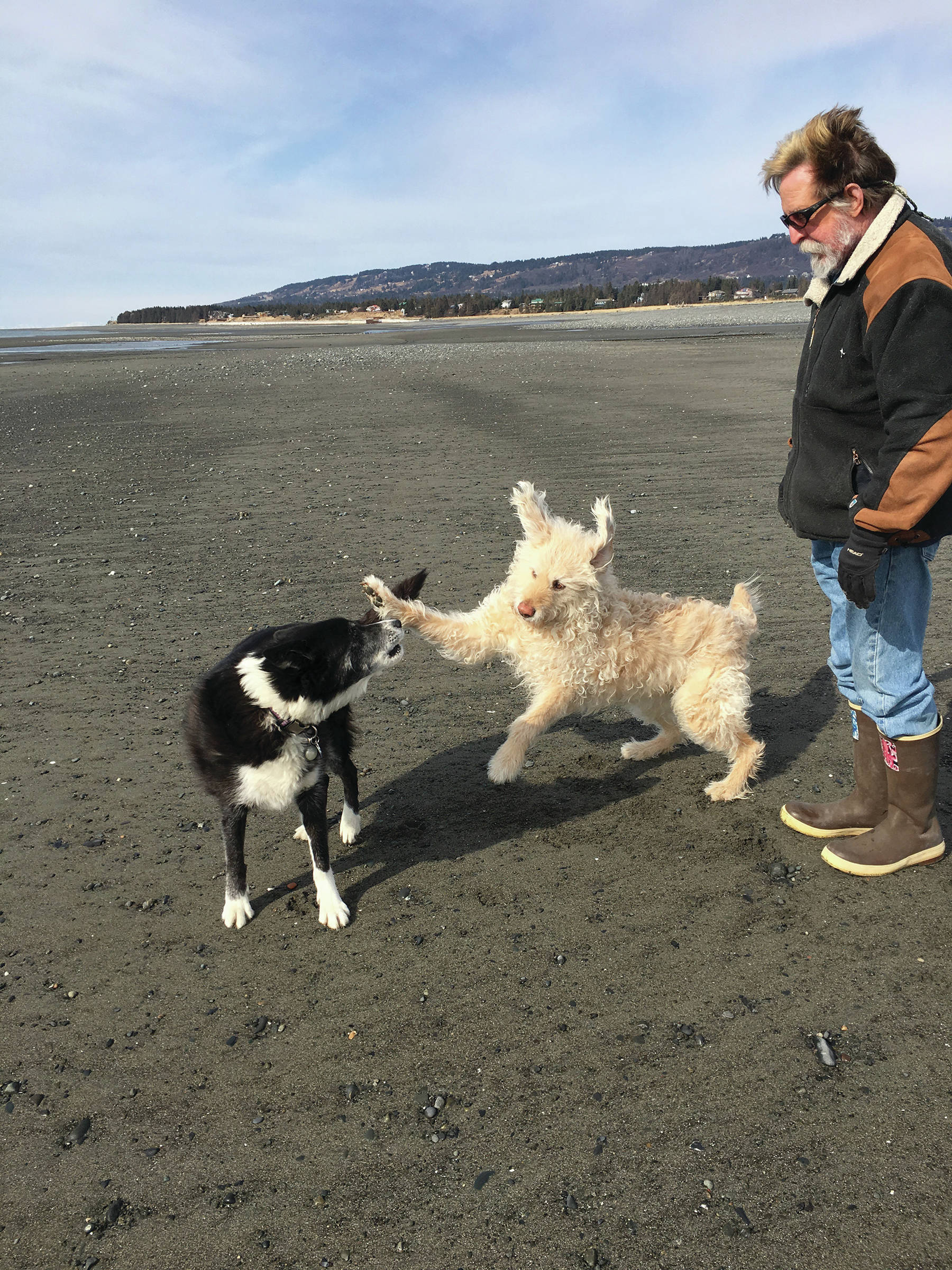Suppose at your latest physical you got a stern lecture from your doctor. Suppose she told you to start exercising more — a lot more. Suppose she told you to crank up those steps from a sedate 3,000 to a peppy 10k.
You could join a health club. You could find a used exercise machine, the kind that wind up barely used and become a messy clothes valet. You could buy a pair of $150 running shoes and pound the pavement.
Or, you could get a dog.
That’s what I did about 23 years ago when my wife and I adopted a rowdy, frisky and very energetic, 2-year-old, 70-pound Irish wolfhound mix dog, Frazier. Frazier didn’t put us on the path to wellness. Frazier pulled us huffing and puffing into a full-steam exercise plan, the kind that involves at least a 2-mile walk daily not for our own benefit, but to wear him out.
We didn’t adopt Frazier with the intent of exercising. Adopting Frazier forced us to take walks so we wouldn’t have a wired, manic canine bouncing off the walls in our 320-square-foot dry cabin.
Pretty much ever since I’ve lived in Alaska I have had a dog. By 1984 that become dogs, plural, as in a sled-dog team. My first dog, Ouzel, gained some friends when I went out to buy a good gee-haw command leader and maybe a wheel dog or two. I came home with five dogs. Mushers can be persuasive that way.
While dog mushing does make you work, it’s not the most steady exercise. It became steadier when my dogs got older and and I took up skijoring, the sport where sled dogs pull you on skis. Still, that didn’t mean every day.
Frazier was every day. To understand his enthusiasm, the back story on how he got rescued starts with someone finding him running down a dirt road in Wasilla dragging a broken chain. We saw him in the Anchorage Daily News Pet of the Week feature and fell in love.
So once we brought Frazier back to Homer, got settled and figured out Frazier’s schedule, we realized he needed walkies, and lots of them. The routine became a morning walk upon rising. That’s when I discovered a raven joined us on our walks, flying from tree to tree, following us. I soon realized the raven found out Frazier would leave crumbs after I gave him his end-of-walk treat. We walked Frazier after dinner and before bed.
A few years after we adopted Frazier I started working at the Homer News. I would bring Frazier to work and take him for walks at lunch at the beach and then, just to wear him out some more, another walk after work. After dinner we’d take him for one more walk. If you’ve lost count, that’s four walks a day. Pretty soon I had a routine and, I discovered, had acquired an exercise plan.
Frazier slowed down and, alas, died about 10 years ago. In another stroke of luck, we adopted an amazing, cool labradoodle, Leia, as in Princess Leia. To understand Leia’s enthusiasm, the back story on how she got rescued is that she turned out to be too enthusiastic for the 5-year-old boy in her family.
Being veterans of the young, enthusiastic, large-dog routine, Jenny and I readjusted our schedules and ramped up our daily walks. I found that if I really needed to wear Leia out, a hike down to Diamond Creek Beach would do the trick.
Leia and I are now both a bit slower, a bit more white around the muzzle, and with creaky bones. But we both need our walkies. If I touch the leash and my walking shoes, a comet of white fur bounces around our entryway.
So that’s the plan. If you need a daily motivation, get yourself a manic canine companion. Here’s the cool thing about this relationship: it’s not just about the exercise. If you know and love dogs like I do, walks become a way to deepen the strange bond between human and canine. You can tell yourself it’s all part of an exercise plan, but it’s really something more.
You may think you’re walking a dog, but the real question is, “Who’s walking whom?”
Reach Michael Armstrong at marmstrong@homernews.com.

